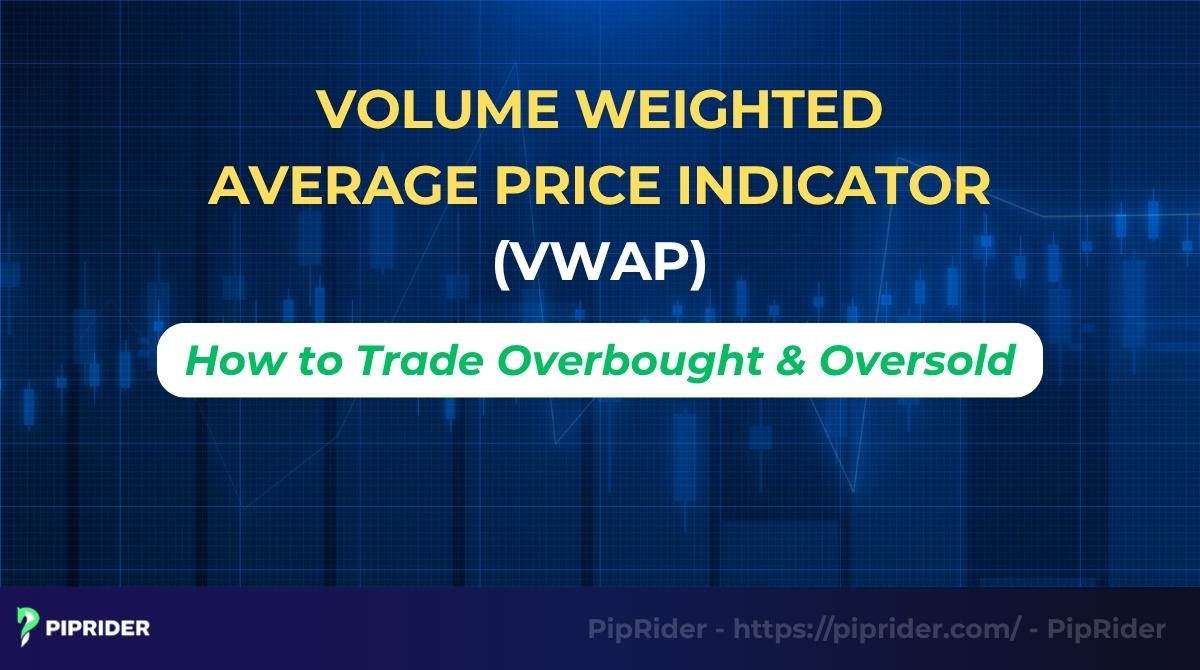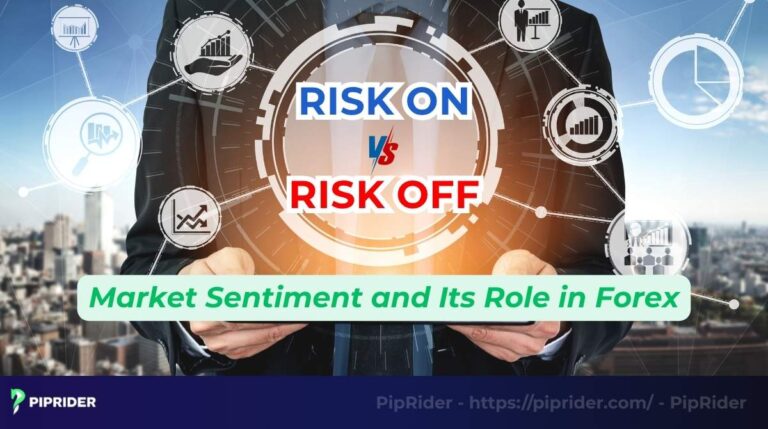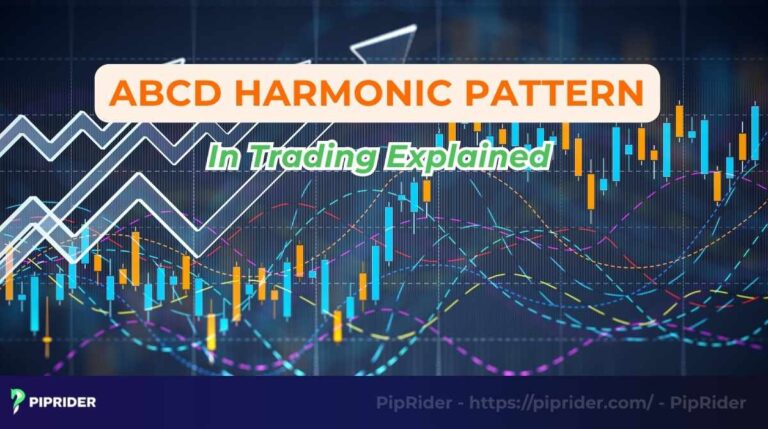In trading, not all price levels are created equal. The Volume Weighted Average Price indicator (VWAP) is a technical analysis tool that reveals the “true” average price of a security by taking into account the volume traded at each price level. Used by both retail day traders and large institutions, it acts as a benchmark to determine if the current market price is fair, overvalued, or undervalued for the day.
This guide will cover everything from the definition and formula to practical trading strategies.
Key Takeaways
- VWAP finds an asset’s average price, giving more weight to levels with higher trading volume.
- It helps traders see if the current price is cheap (below VWAP) or expensive (above VWAP) for the day.
- The VWAP line often acts as a key level of support during uptrends and resistance during downtrends.
- Because it resets daily, VWAP is a tool specifically designed for day traders.
- Its signals are most reliable when combined with price action or other indicators like the RSI.
1. What Is Volume Weighted Average Price (VWAP)?
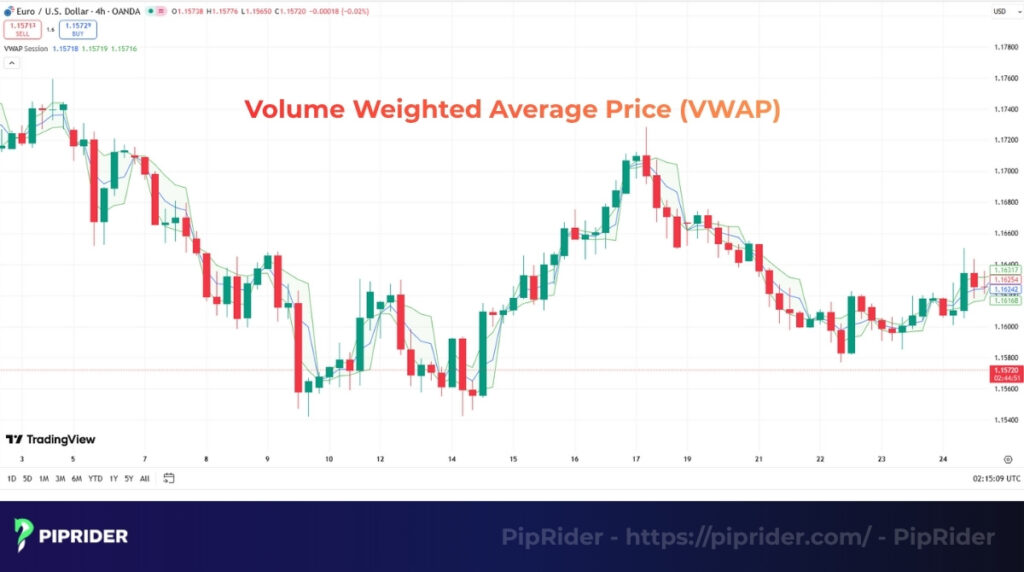
The Volume-Weighted Average Price (VWAP) is a technical analysis indicator that calculates the true average price of an asset over a single trading day, based on both price and volume. Its primary purpose is to give traders a benchmark for the day’s “fair value”. By anchoring the average price to the volume, it gives more weight to price levels where significant buying activity or selling activity occurred.
In practice, the VWAP line helps traders quickly assess the current market sentiment.
- When the price is trading above the VWAP, it’s generally considered bullish, suggesting the asset is “expensive” relative to the day’s average.
- When the price is below the VWAP, it’s considered bearish, suggesting the asset is “cheap.”
Because of its focus on intraday price and volume, it’s a critical tool for both retail day traders and institutional investors looking to execute large orders with minimal market impact.
2. How to Calculate VWAP
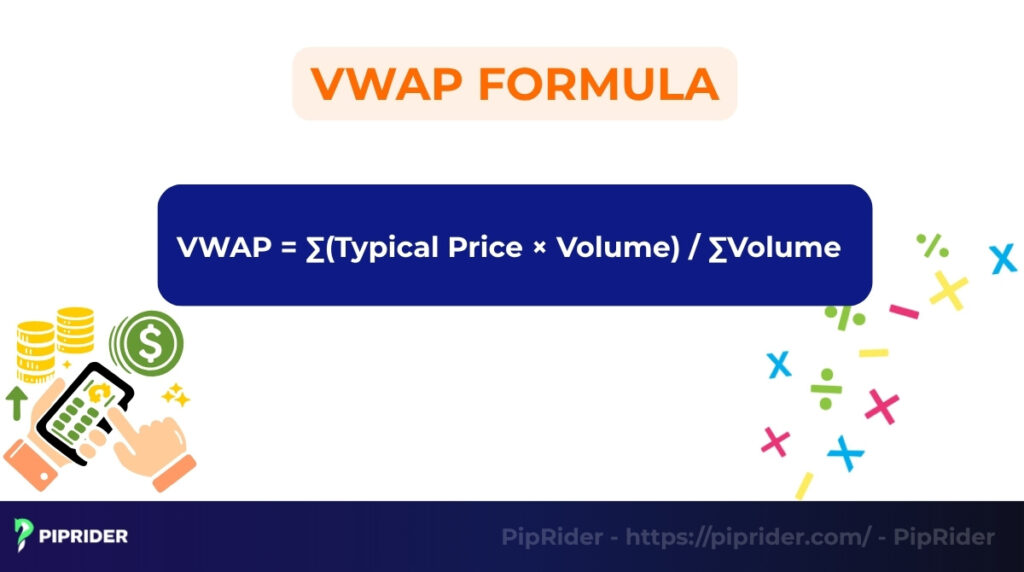
The VWAP calculation is a cumulative, multi-step process that happens in the background on your charting platform. It continuously updates throughout the day, providing a real-time average price weighted by volume.
2.1. VWAP Formula
The formula for the Volume Weighted Average Price indicator is:
VWAP = ∑(Typical Price × Volume) / ∑Volume
Where:
- Typical Price: The average price of a trading period.
- Volume: The number of shares or contracts traded during that same period.
- Σ (Sigma): This symbol signifies that the values are cumulative, meaning they are summed up from the start of the trading session.
2.2. Step-by-Step Calculation
Here’s a simplified breakdown of how the indicator is calculated from the start of the trading day:
1. Calculate the Typical Price for each period. For every candle (e.g., a 5-minute candle), it is calculated using this formula:
Typical Price = (High price + Low price + Closing price) / 3
2. Multiply by Volume. This Typical Price is then multiplied by the volume that was traded during that same period to get the period’s volume-weighted price.
3. Keep a Cumulative Total. The indicator maintains two running totals from the start of the session: the cumulative Price × Volume value and the total volume traded.
4. Calculate the VWAP. The final VWAP is the ratio of the cumulative Price × Volume total to the cumulative volume total.
Crucially, the VWAP calculation resets at the start of each new trading day. This is why it is strictly an intraday indicator best viewed on intraday charts and cannot be used on daily or weekly charts like a standard moving average.
Read more:
The average daily range ADR technical indicator: Full guide
3. How to Use the VWAP Indicator in Trading?
Traders use the VWAP in several ways, primarily as a real-time benchmark for trend direction, support/resistance, and trade execution. It provides an objective measure of where the market’s “fair value” is for the day.
3.1. Identifying Trend Direction
The simplest VWAP trading strategy is to determine the intraday trend bias. It acts as a clear line in the sand between bullish and bearish sentiment.
- When the price is consistently trading above the VWAP line, it indicates a bullish bias, suggesting buyers are in control for the day.
- When the price is consistently trading below the VWAP line, it indicates a bearish bias, suggesting sellers are dominant.
3.2. VWAP as Dynamic Support and Resistance
Because the VWAP line is weighted by volume, it often acts as a more reliable level of support or resistance than a simple moving average. It represents the market’s “center of gravity” for the day.
In an uptrend, traders will often watch for the price to pull back to the VWAP line and find a dynamic support level before bouncing higher. In a downtrend, the VWAP line can act as a key resistance level where sellers re-enter the market.
3.3. VWAP for Entry and Exit Timing
The VWAP is a crucial tool for trade execution, especially for large institutional players.
- Institutional traders often aim to buy a security at or below the VWAP and sell at or above it. This ensures their large orders are filled at a “good” price relative to the day’s trading activity.
- Retail traders use this same logic to improve their entry points and exit points, using the VWAP as a guide to avoid buying high or selling low during the session.
4. VWAP vs. Simple Moving Average (SMA)
Both the VWAP and a Simple Moving Average (SMA) appear as single lines on a chart and measure an average price. However, they are fundamentally different tools designed for different purposes. The key distinction is that VWAP incorporates volume into its calculation, while an SMA only considers price.
This difference leads to distinct characteristics and uses for each indicator.
| Aspect | Volume-Weighted Average Price (VWAP) | Simple Moving Average (SMA) |
| Input Data | Based on both Price and Volume. | Based on Price only. |
| Update Mechanism | Resets at the start of each new trading day. | A continuous, rolling calculation. |
| Main Goal | To measure intraday “fair value”. | To smooth out the long-term trend. |
| Signal Type | Highly responsive to volume spikes. | Smoother and slower to react to price changes. |
| Primary Application | Intraday trading and execution strategies. | Long-term trend-following and swing trading. |
In short, VWAP is a specialized instrument for day traders to pinpoint where the day’s business is conducted. In contrast, the SMA is a more versatile indicator used across all trading styles to gauge the long-term trend.
5. Trading Strategies Using the Volume-Weighted Average Price indicator
The VWAP is a versatile indicator that forms the foundation for several effective intraday trading strategies. By using it as a benchmark for fair value, traders can identify breakouts, trade pullbacks, and spot potential mean reversion opportunities.
5.1. VWAP Breakout Strategy

This strategy uses the VWAP line to confirm a shift in intraday market sentiment. A decisive cross of the VWAP, especially when backed by high volume, often signals the start of a new directional momentum move for the session.
- Buy Signal: A trader initiates a buy order when the price breaks and closes decisively above the VWAP line, preferably accompanied by a surge in trading volume.
- Sell Signal: A sell (or short) order is placed when the price breaks and closes decisively below the VWAP line on high volume.
5.2. VWAP Pullback Strategy
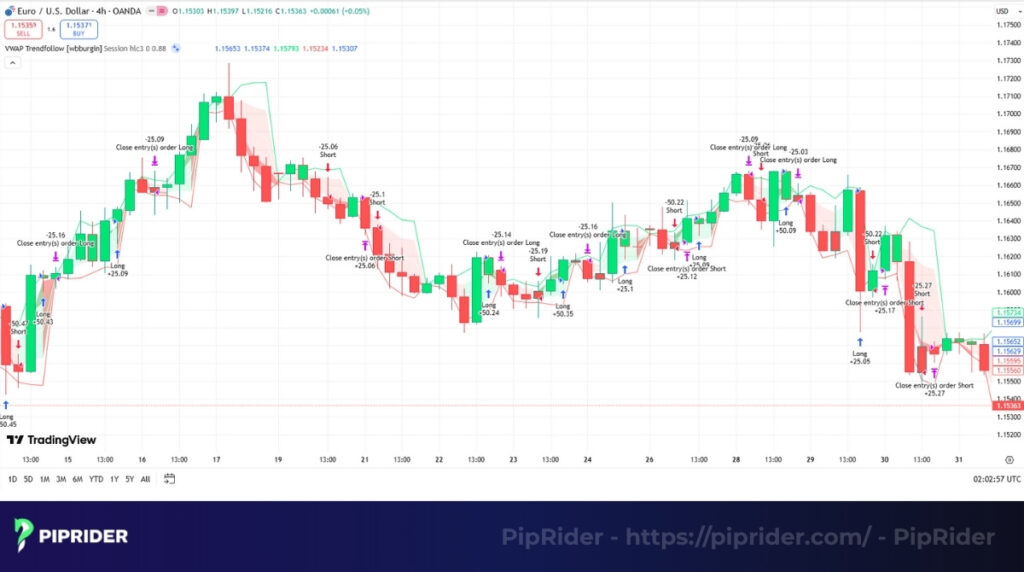
This is a classic trend-following strategy that uses the VWAP as a dynamic support or resistance level. The goal is to enter an established trend at a favorable price as the market temporarily pulls back to its “fair value” line.
- In an Uptrend: When the price is consistently trading above the VWAP, a trader will wait for the price to pull back to the VWAP line and look for a bounce to enter a buy trade.
- In a Downtrend: When the price is consistently trading below the VWAP, a trader will wait for the price to rally back up to the VWAP line and look for a rejection to enter a sell trade.
5.3. VWAP Mean Reversion Setup
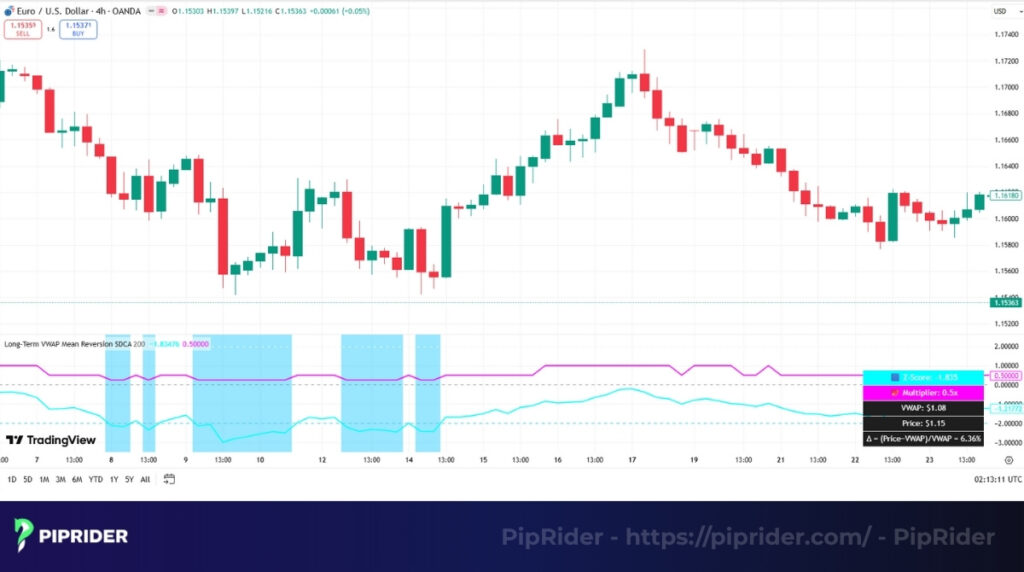
This strategy works on the principle that price will often revert to its average. It treats the VWAP line as a “center of gravity” and looks for opportunities when the price has moved too far away from it, creating an overextended condition.
Traders often combine this with other oscillators. For example, a trader might look for the price to be stretched far above the VWAP. If the Relative Strength Index (RSI) is also in an overbought or oversold condition, this combination can signal a potential short-term sell opportunity back down to the VWAP.
6. Advanced VWAP Variants
While the standard VWAP is an intraday tool, traders have developed variations to apply its powerful volume-weighting concept to longer timeframes. These advanced tools are particularly useful for swing traders who want to analyze price action beyond a single day.
6.1. Anchored VWAP (AVWAP)
The Anchored VWAP (AVWAP) solves the biggest limitation of the standard VWAP. Instead of automatically starting its calculation at the beginning of the day, the AVWAP allows you to manually “anchor” the starting point to any significant event on the chart. This could be a major news release, an earnings report, a key high or low, or a technical breakout.
The AVWAP then calculates the volume-weighted average price from that specific point forward, showing you the “fair value” as defined by the market since that event occurred. This makes it an incredibly powerful tool for swing traders to identify key support and resistance levels over multiple days or weeks.
6.2. Multi-Day VWAP
Another variant is the Multi-Day VWAP, which simply extends the calculation period over a set number of sessions, such as a week (5-day VWAP) or a month. Instead of resetting every morning, it maintains a continuous, rolling calculation of the volume-weighted average price over the specified longer timeframe.
This is useful for swing traders and longer-term position holders who want to gauge the prevailing sentiment over a more extended period. It helps them determine if they are getting a good price relative to the average price of the past week or month, rather than just the current day.
7. Limitations of VWAP
While the VWAP is a powerful tool, it’s crucial to understand its limitations to use it effectively and avoid common trading traps.
- A lagging indicator: Like all averages, the VWAP is a lagging tool, as it is based on past data, meaning it will always react to price, not predict it.
- Ineffective in low-volume markets: In thinly traded assets with low liquidity, the VWAP can be misleading. Since its entire calculation is based on weighting by volume, a lack of significant trading activity can make the resulting average price less meaningful.
- Distorted by high volatility: The VWAP can be heavily skewed by a single period of extreme volume and price movement, such as during a major news event or a large opening gap. This can make the indicator a less reliable benchmark for the remainder of the trading session.
- Intraday focus: As it is based on historical data from the current day only, the standard VWAP calculation is strictly an intraday tool. This makes it unsuitable for analyzing trends on longer timeframes, like daily or weekly charts.
- Requires confirmation: The VWAP is a benchmark, not a complete trading system. A price crossing the VWAP line is not a signal on its own. It should always be confirmed with other forms of analysis, such as price action, chart patterns, or indicators like the RSI and MACD.
8. Frequently asked questions about Volume Weighted Average Price Indicator
9. The Bottom Line
The Volume Weighted Average Price indicator (VWAP) is an essential tool for day traders. It offers a clear benchmark to assess whether the current price is cheap or expensive relative to the day’s trading activity. While it excels in intraday analysis, its signals are most powerful when confirmed with tools like the Volume Profile, RSI, or MACD.
To avoid false signals, traders should always use the VWAP in the context of the broader trend. For more in-depth guides on essential trading indicators, follow Piprider and explore our comprehensive articles in the Broker Reviews section.


